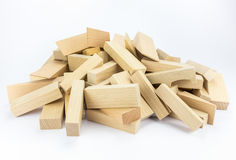Picture with me, the game of Jenga. Most know what this is, but i could also describe it as a wooden-block tower puzzle. The alternating, three block, by three block layers, form an integrated tower.
It is a perfectly smooth rectangular prism. It appears solid, despite its make up of smaller blocks. And unless otherwise disturbed, it maintains its integrity.
This structure is similar to a great relationship or friendship, integrated, complementary, solid, supporting, and complete.
And then someone starts the game. Someone decides, “I’d like to see if I can pull a piece out, and build on top of this.” Or, “I’m not sure I like this the appearance of this structure.” Or someone can’t abide the integrity, and tells a lie.
A decision is made, a piece is removed. The tower is instantly changed. Not drastically, of course, for only one piece has been removed. And the overall fortitude is mostly maintained. But the true integrity is gone. The piece cannot be reinserted properly, it won’t fit exactly, and trying to force it to do so risks further damage. The tower is forever changed.
In time more pieces are removed and stacked precariously atop the tower. More alterations are made, with the intent of maintaining balance, but instead causing shakiness in the structure. More lies occur, and they become easier and easier to draw once the initial integrity of the tower is compromised.
Eventually, the structure is nothing resembling its first, perfect form. All the adjustment, augmentation, and deceit have left a puzzle resembling nothing of its former self. One looking at it can scarce believe that any part of the teetering, ravaged, edifice resembled anything with integrity.
And then, someone exhales, or sighs, or makes an effort to tap on one of the angled pieces at the bottom back into a more supportive position. The whole pillar collapses, scattering all the pieces that were once perfect, whole, and purposeful, into a chaotic, incoherent, and meaningless disaster.
Humbly yours,
J

